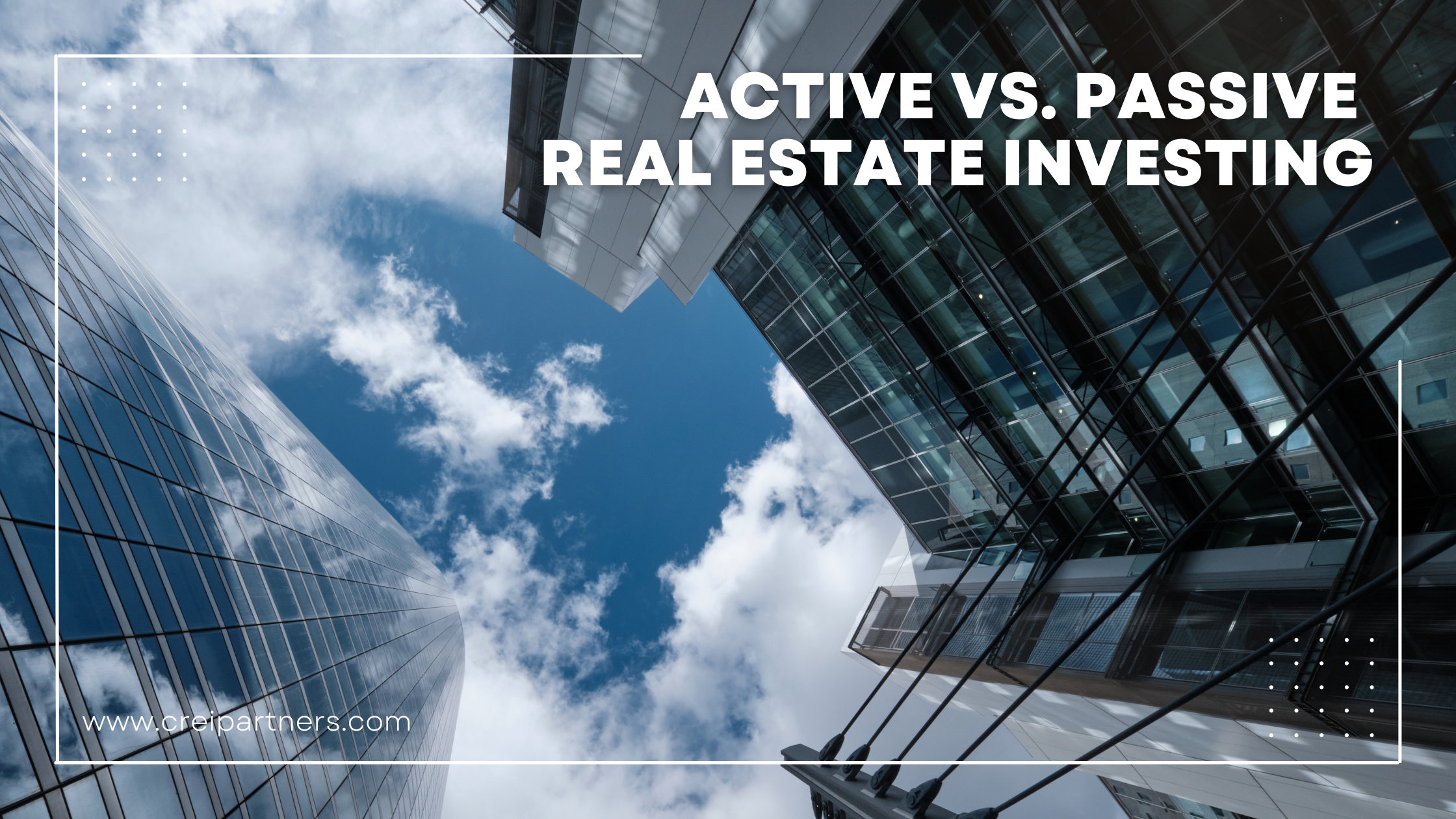
Active vs. Passive Real Estate Investing
Active and passive real estate investments both offer opportunities for income generation. But, each type comes with different strategies, work/time requirements, and risks. These differences may make one or the other a better fit for you and your family.
Active real estate investment techniques include fix-and-flip houses or owning single-family rental homes, among others. Passive real estate investments are opportunities that pool money with other investors, which is then managed by professionals, and profits are split among stakeholders. CREI Partners focuses on offering passive investments into commercial multifamily property syndications, so we will be discussing that technique here.
There are three main factors that differentiate active and passive real estate investing. The time required to manage the investments are dramatically different. Each offers different levels of risk. And, of course, each offers a different set of rewards, as well.

 Subscribe to our newsletter so you never miss out on new investment opportunities, podcasts, blogs, news and events.
Subscribe to our newsletter so you never miss out on new investment opportunities, podcasts, blogs, news and events.